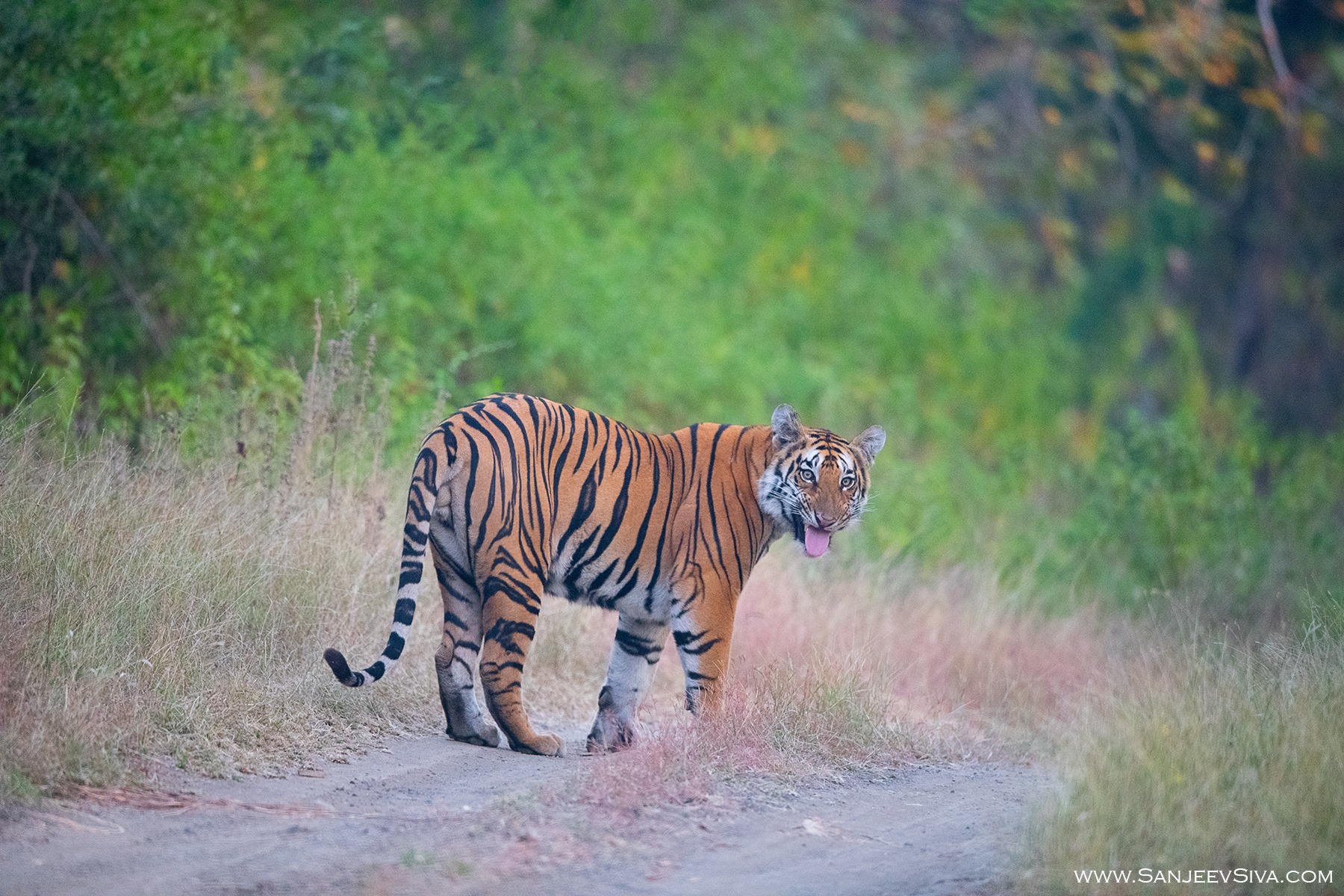Flehmen response
Between the sense of taste and sense of smell lies another sense that is present in many animals, including humans but vestigial.
Most animals can sense pheromones (a secreted or excreted chemical factor that triggers a social response such as a signal, trail, sex, territorial etc.)

A duct right behind the upper teeth transfers this information to an organ called Jacobson's organ (or the Vomeronasal organ) when the animal does this special action called flehmen's response or flehmening in which an animal curls back its upper lip exposing its front teeth, inhales with the nostrils usually closed, and then often holds this position for several seconds.
 A variety of animals including Snakes, Elephants, Horses, Sambar deer (Rusa unicolor), Zebras, Cats etc., do flehmening.
A variety of animals including Snakes, Elephants, Horses, Sambar deer (Rusa unicolor), Zebras, Cats etc., do flehmening.
In territorial animals such as a tiger, this behavior is of a great interest, as it helps (not definitive)
- find a mate. Tigers will follow the trails left behind by female urine/scent marking and understand if the female is in estrus.
- understand a threat. Tigers mark territories by a variety of methods including clawing, scent-marking, scat-marking etc., leaving behind the pheromones, that will be picked by another tiger walking that way.
- follow a trail, left behind by a sibling or a father or mother. Since pheromones are secreted in non-volatile form, the scent-marking could also lead the tiger to follow a specific path
- avoiding inbreeding. Pheromones prevents tigers from inbreeding.
Inter species flehmening helps animals such as deer to learn the presence of a tiger (or a predator) in the vicinity. More often, deer give alarm calls, despite the absence of a tiger, which could be attributed to inter-species flehmening, probably by sensing the pheromones left behind by a tiger. (goats are known to understand the pheromones of 20 other species)
